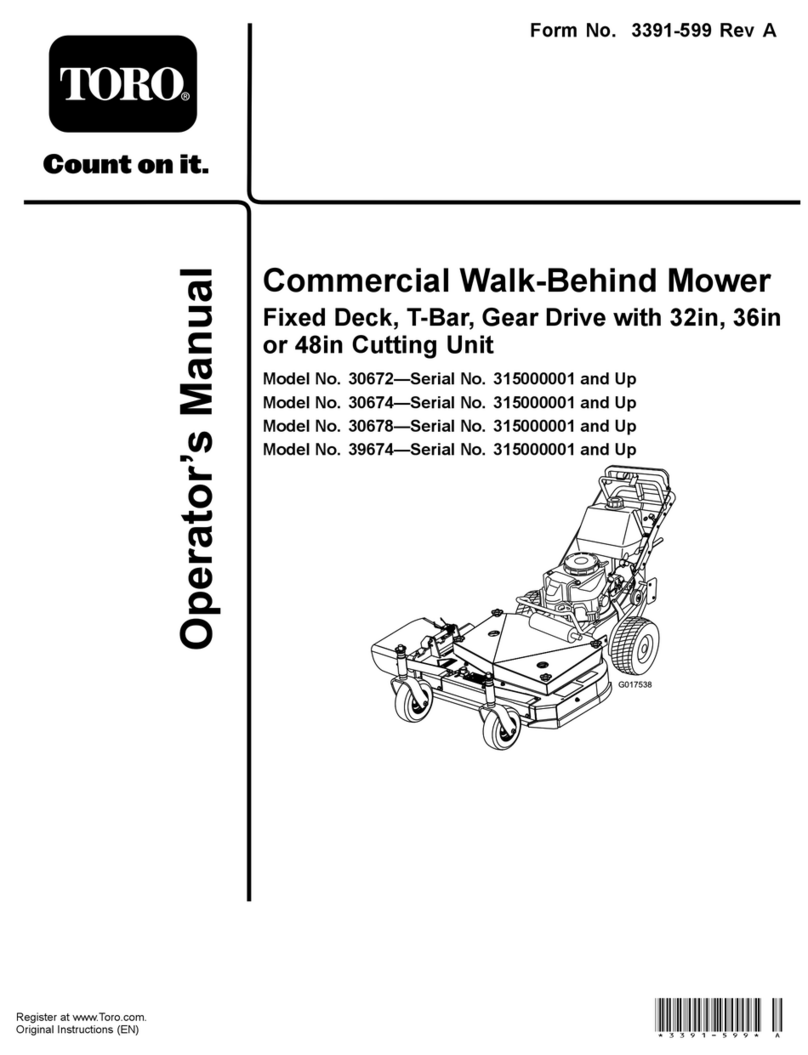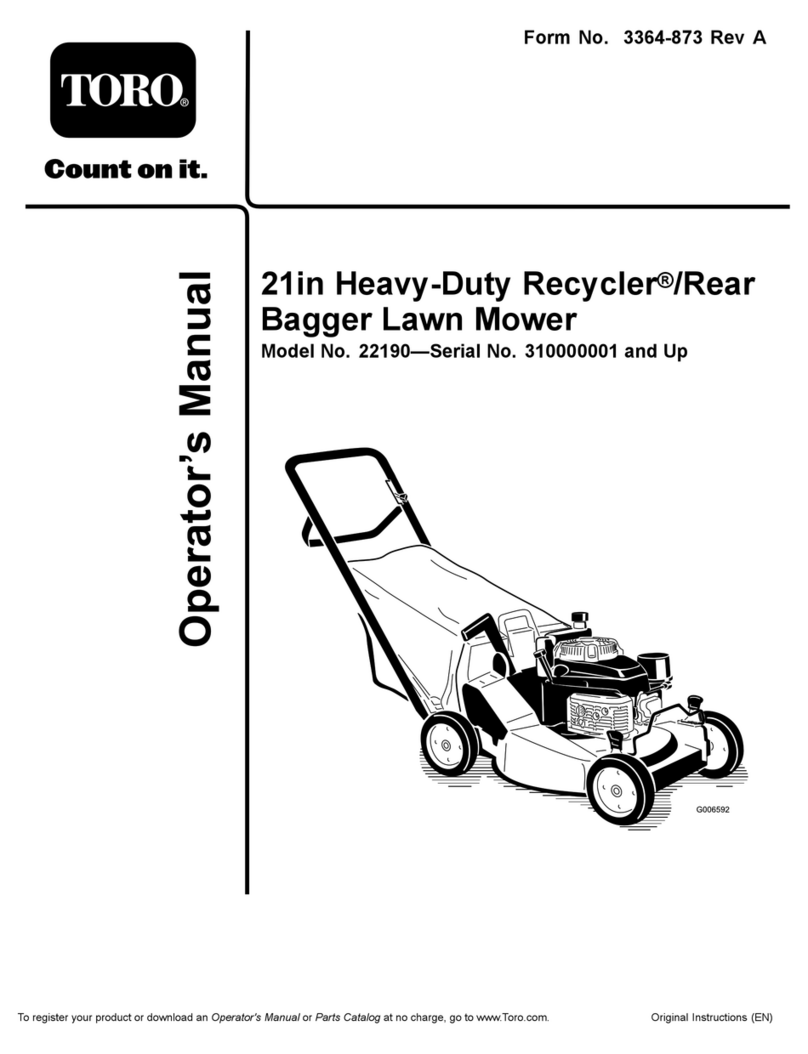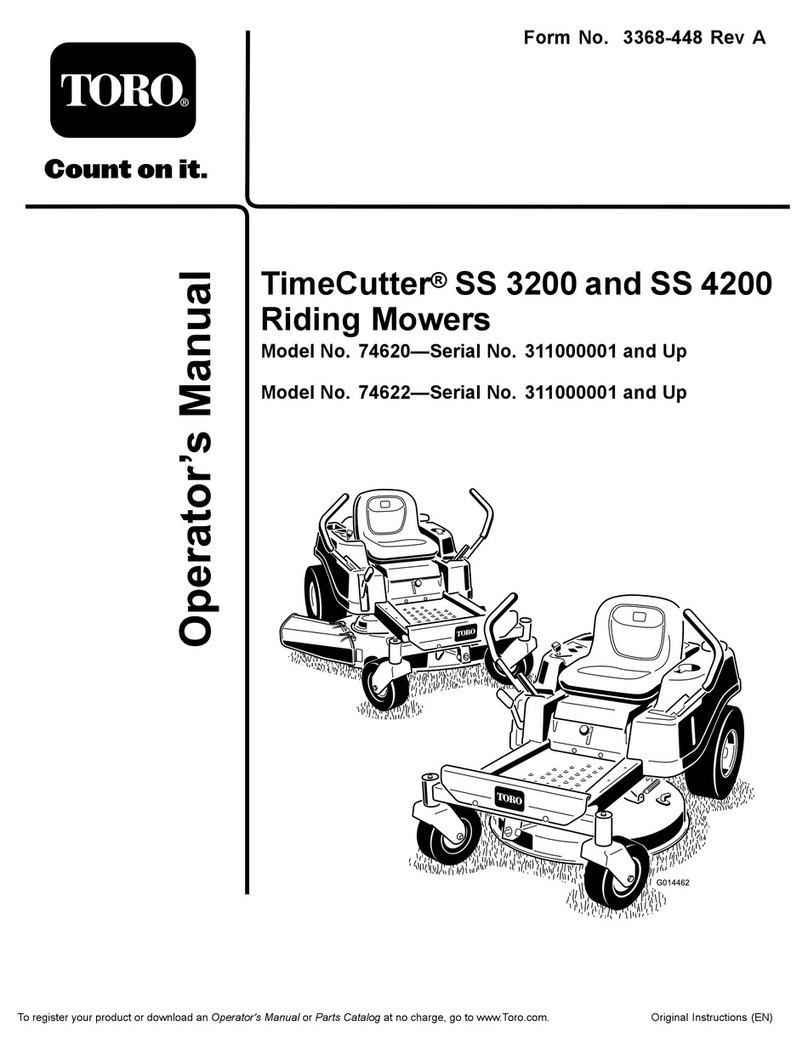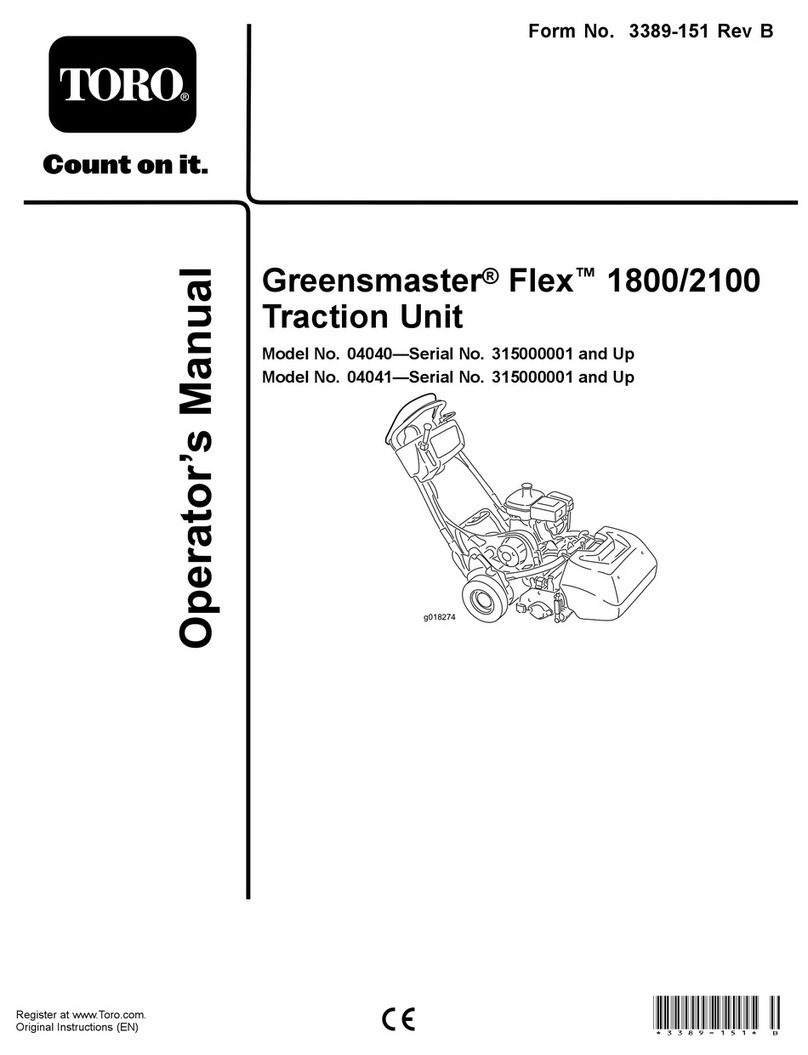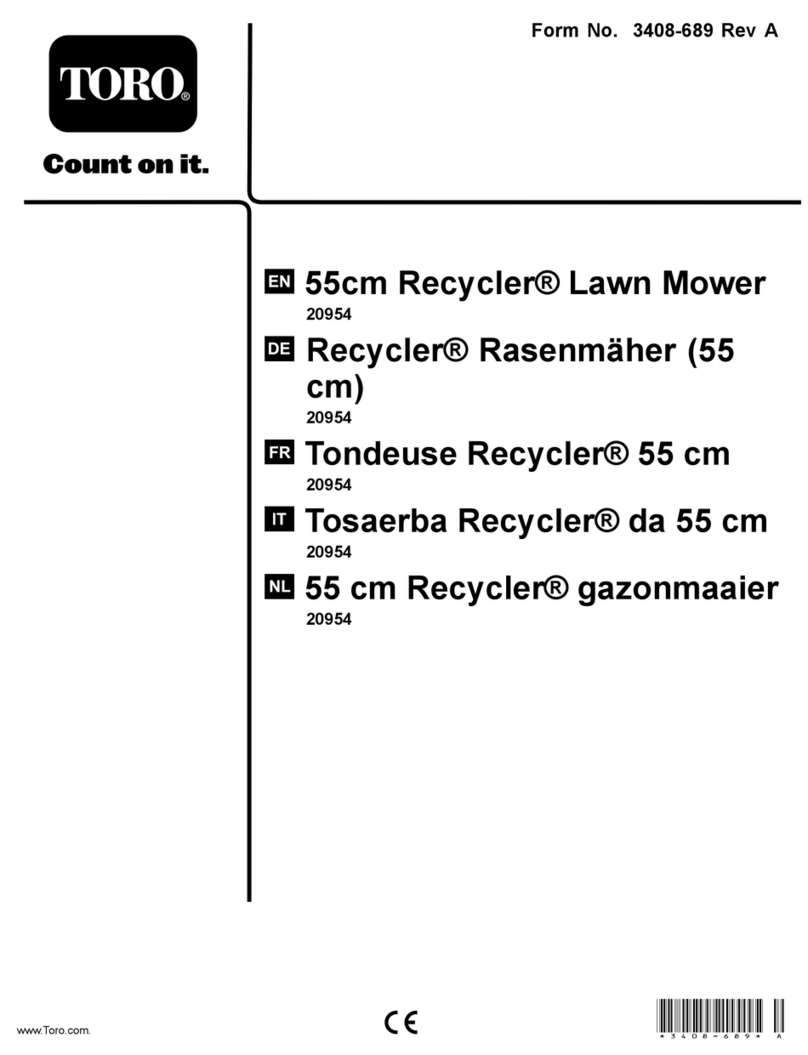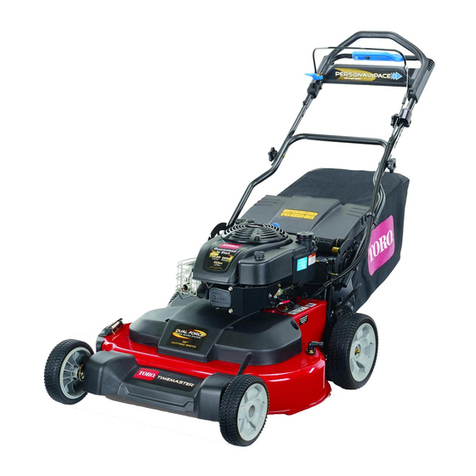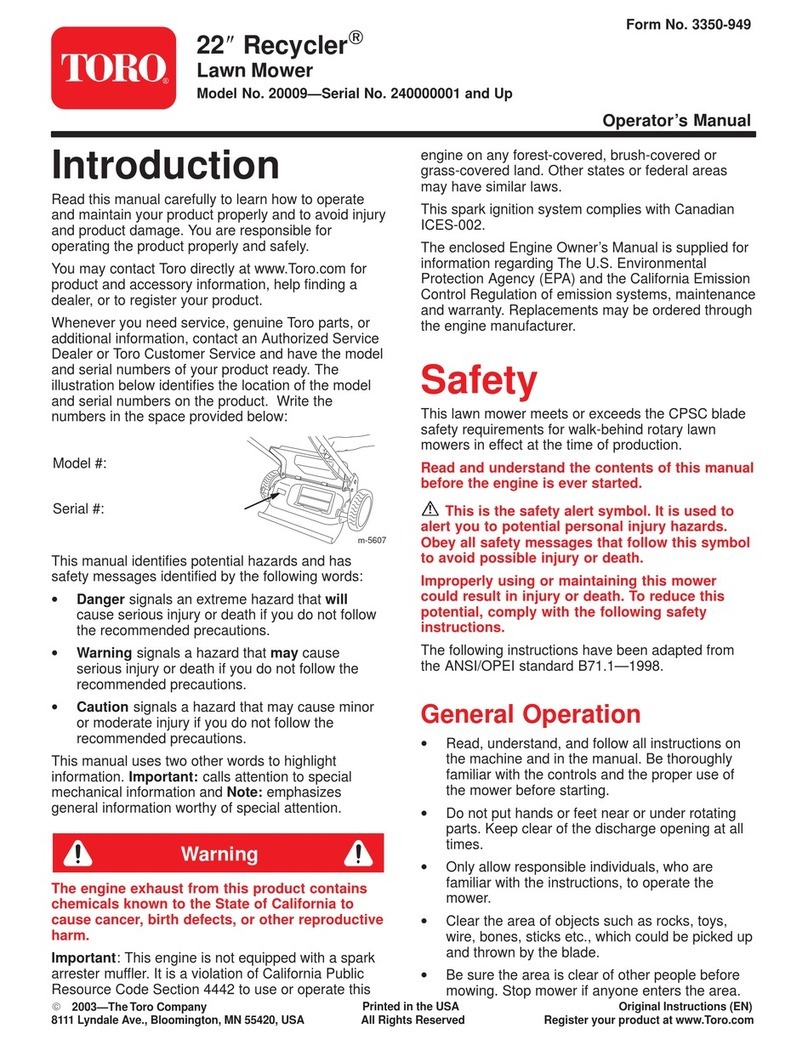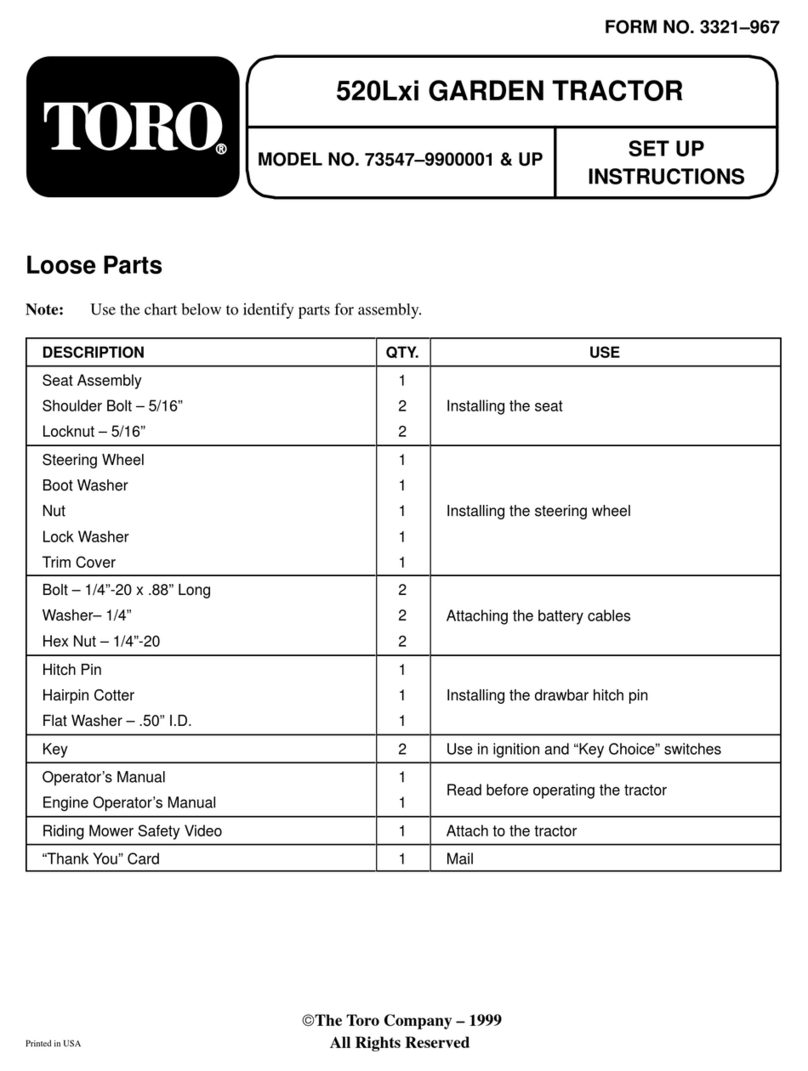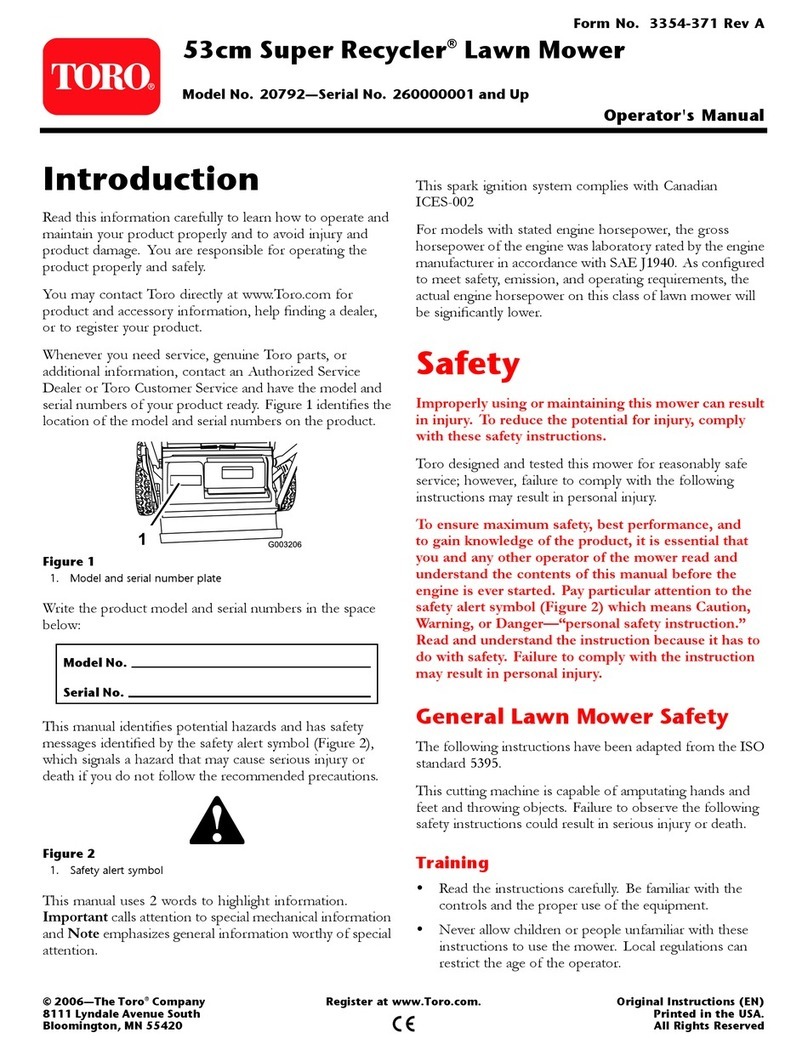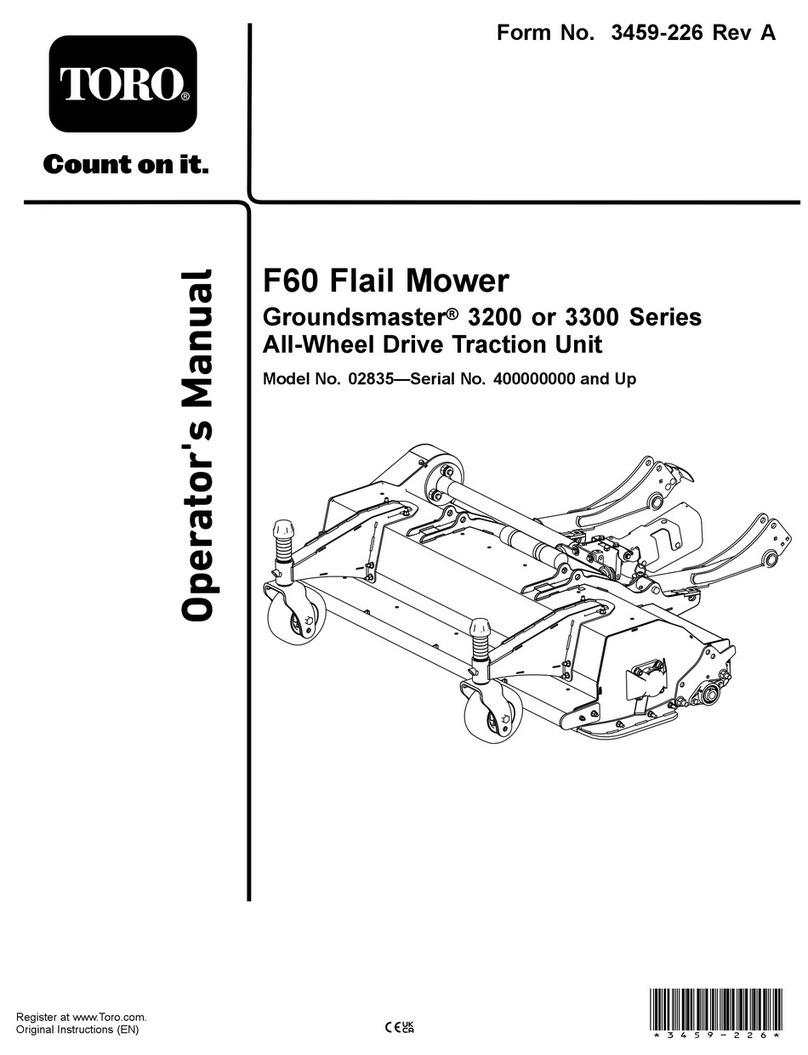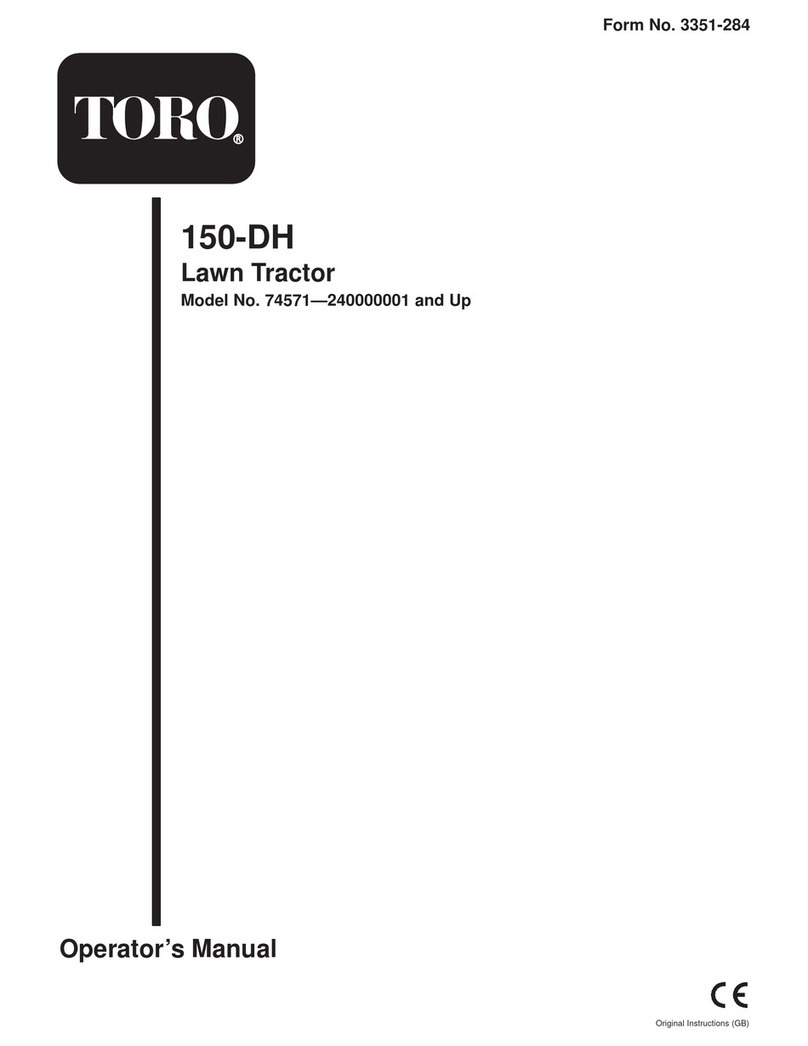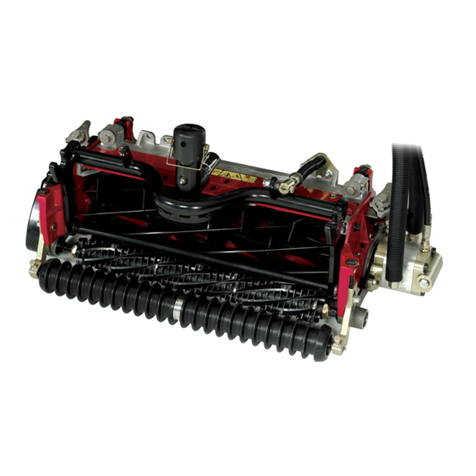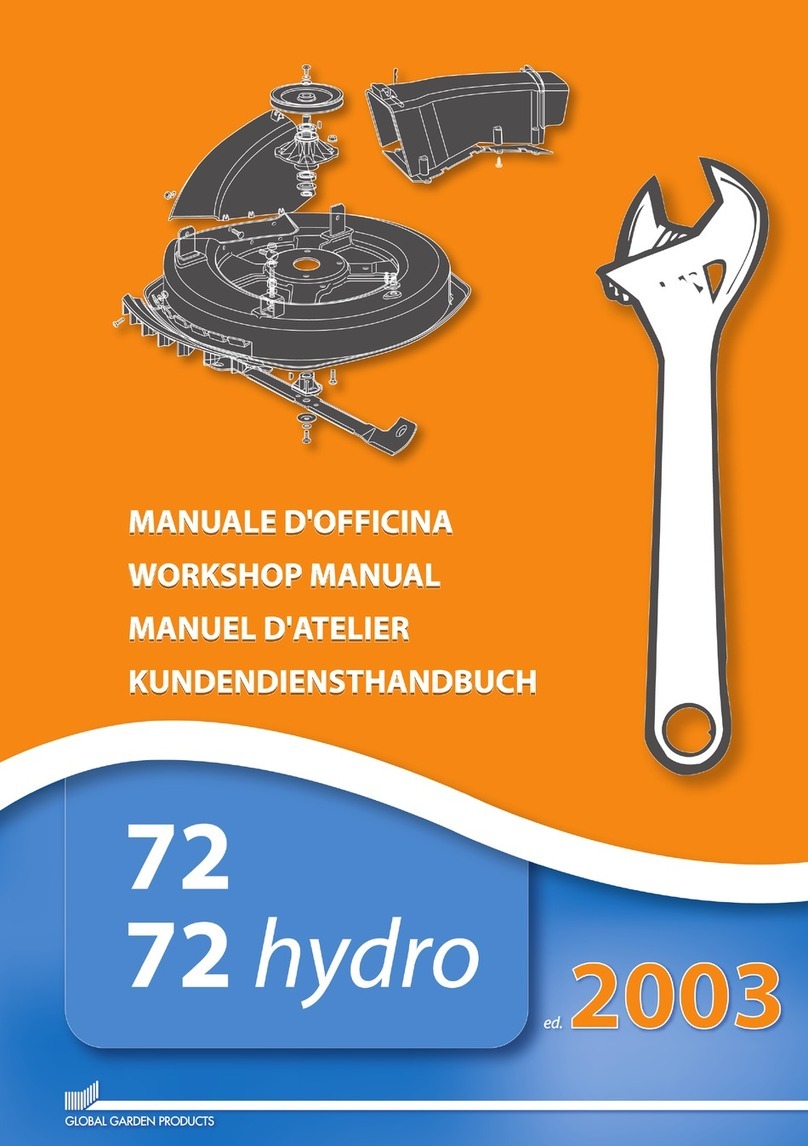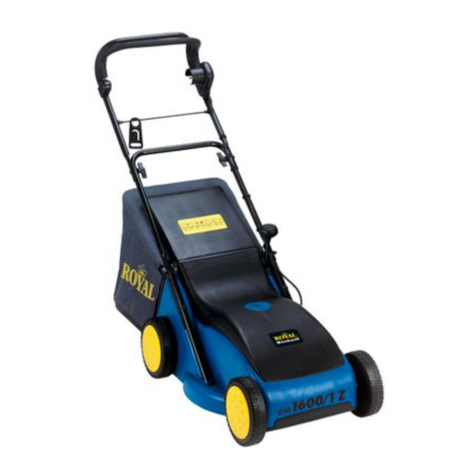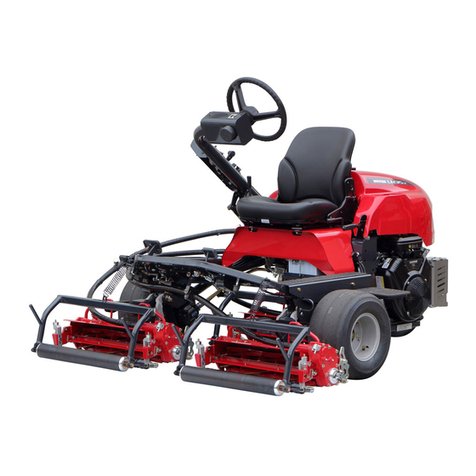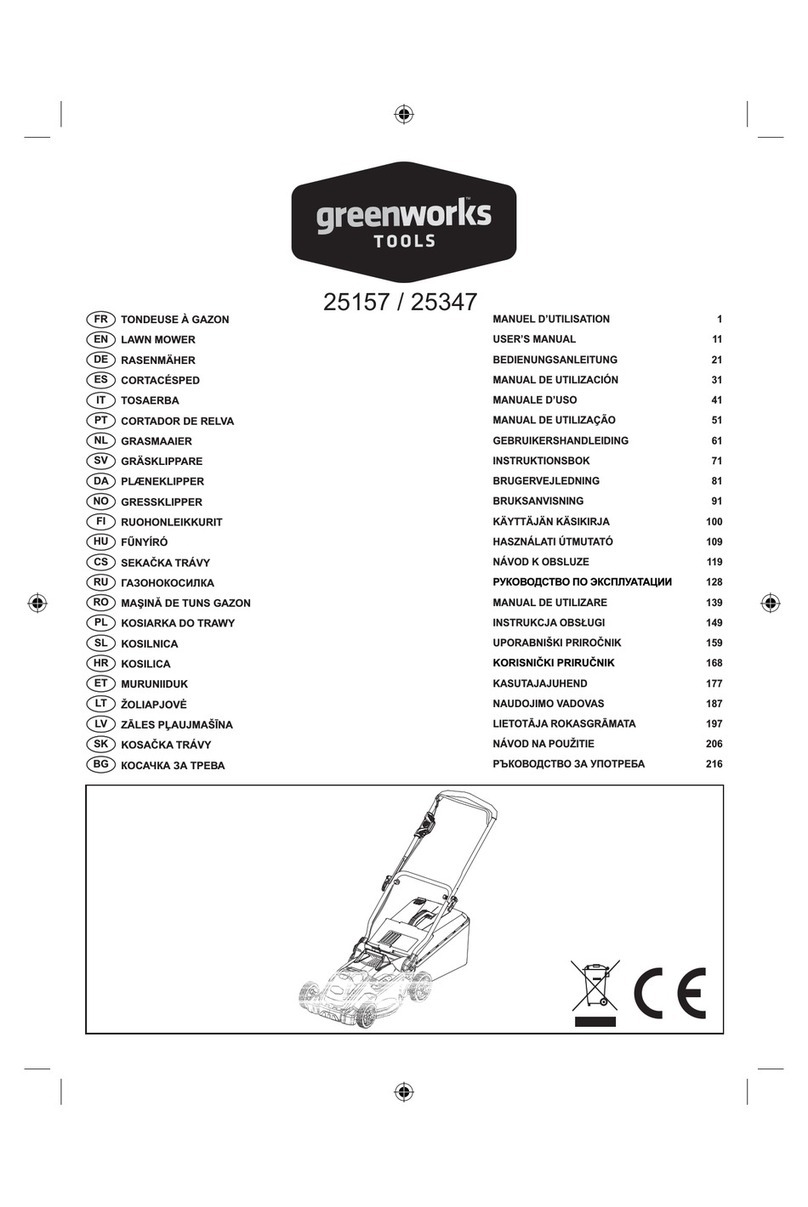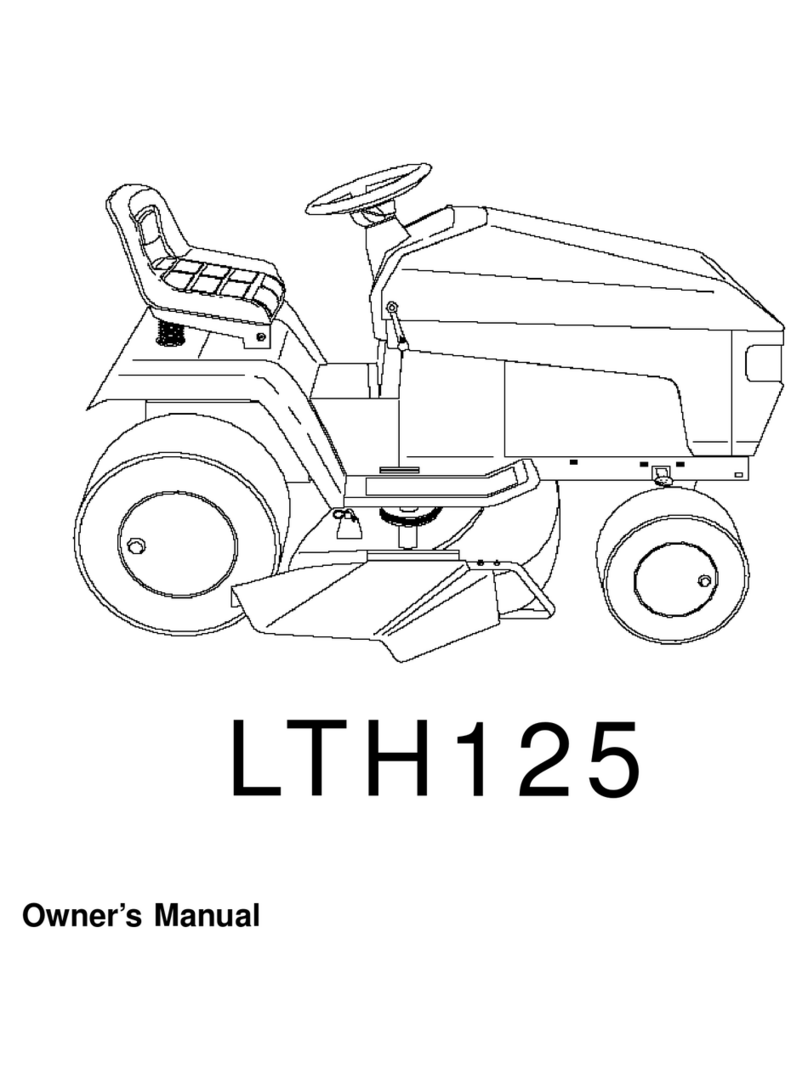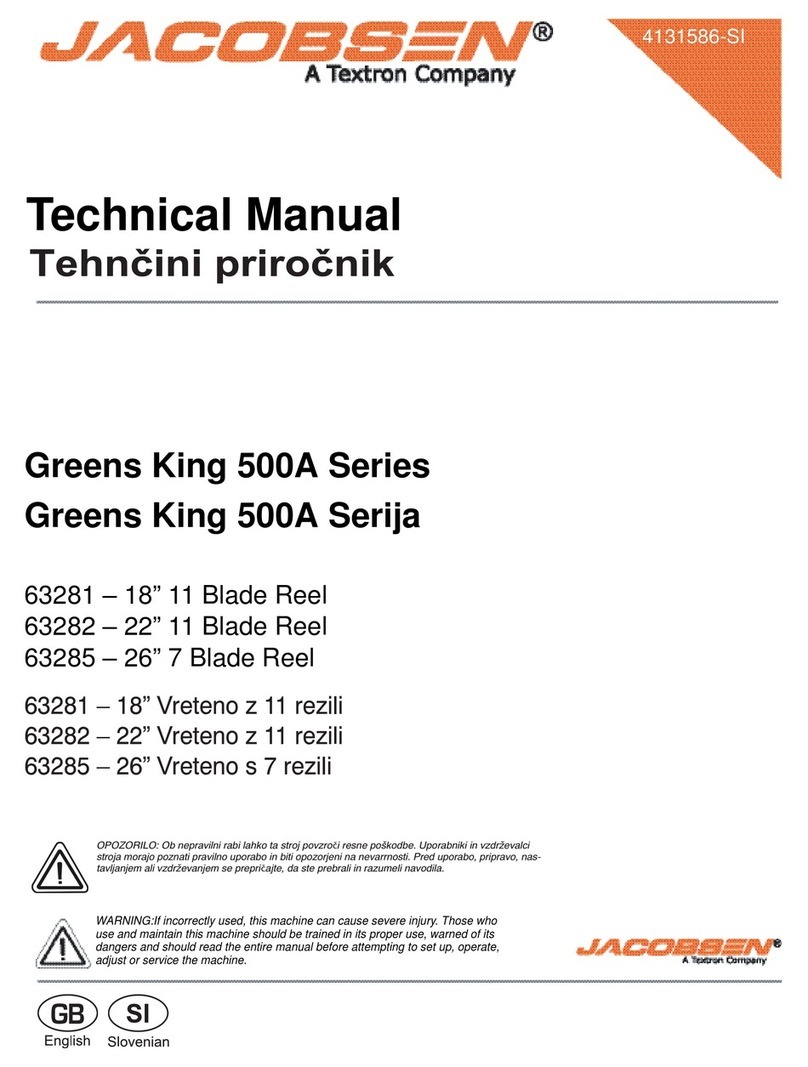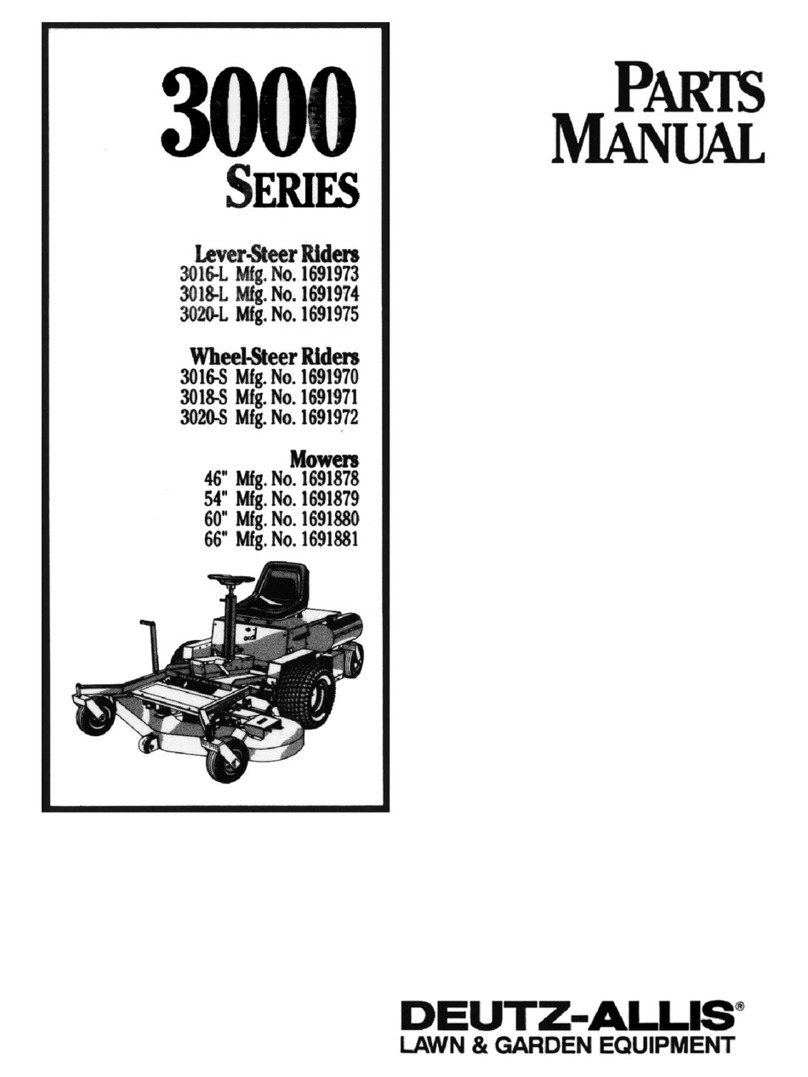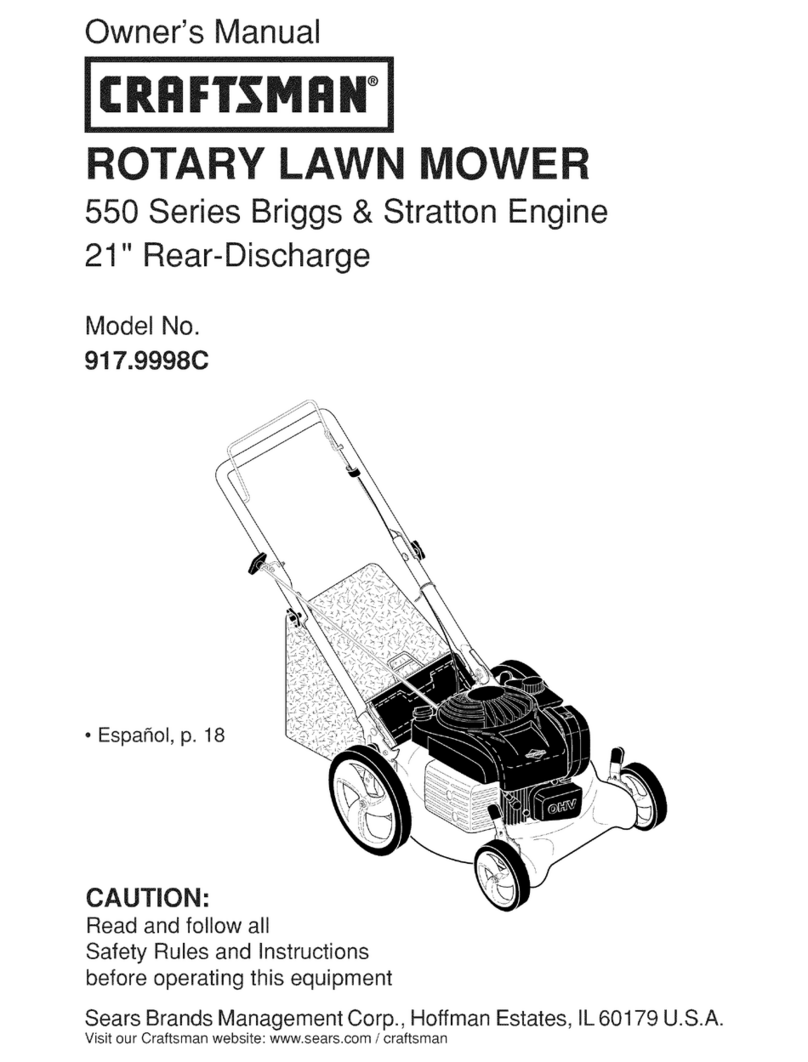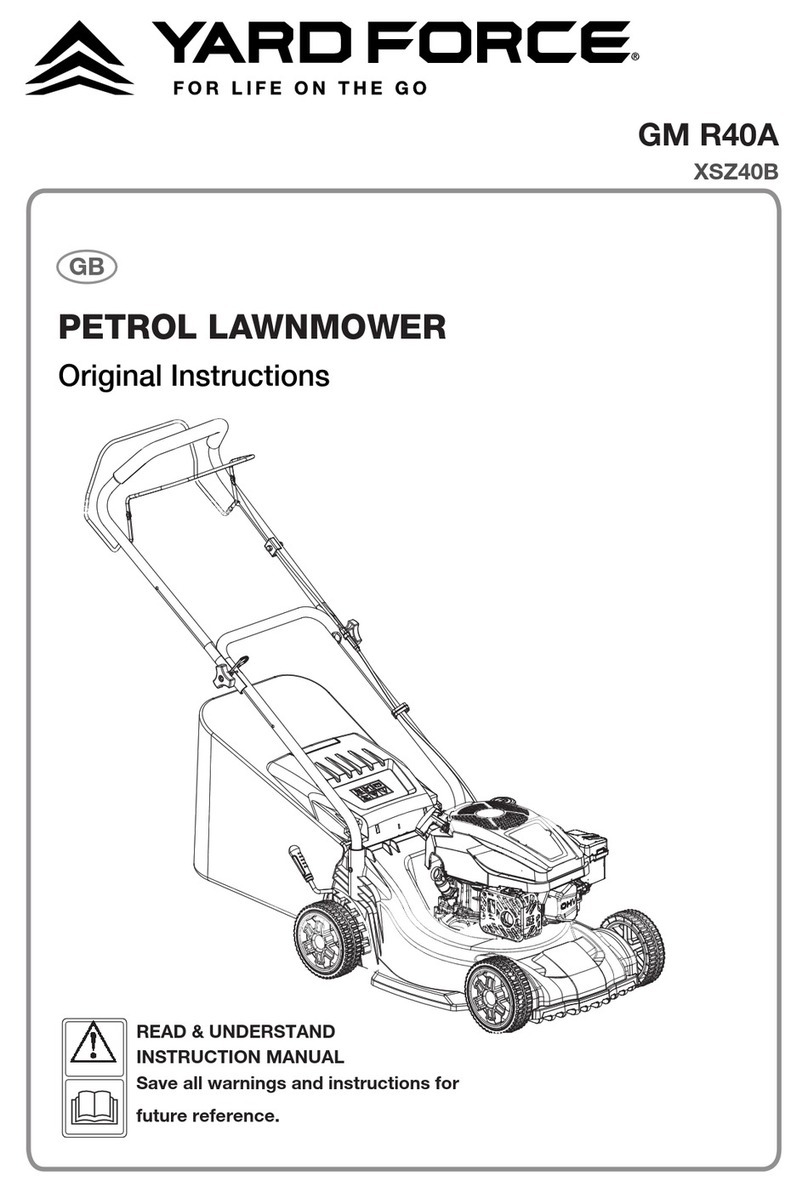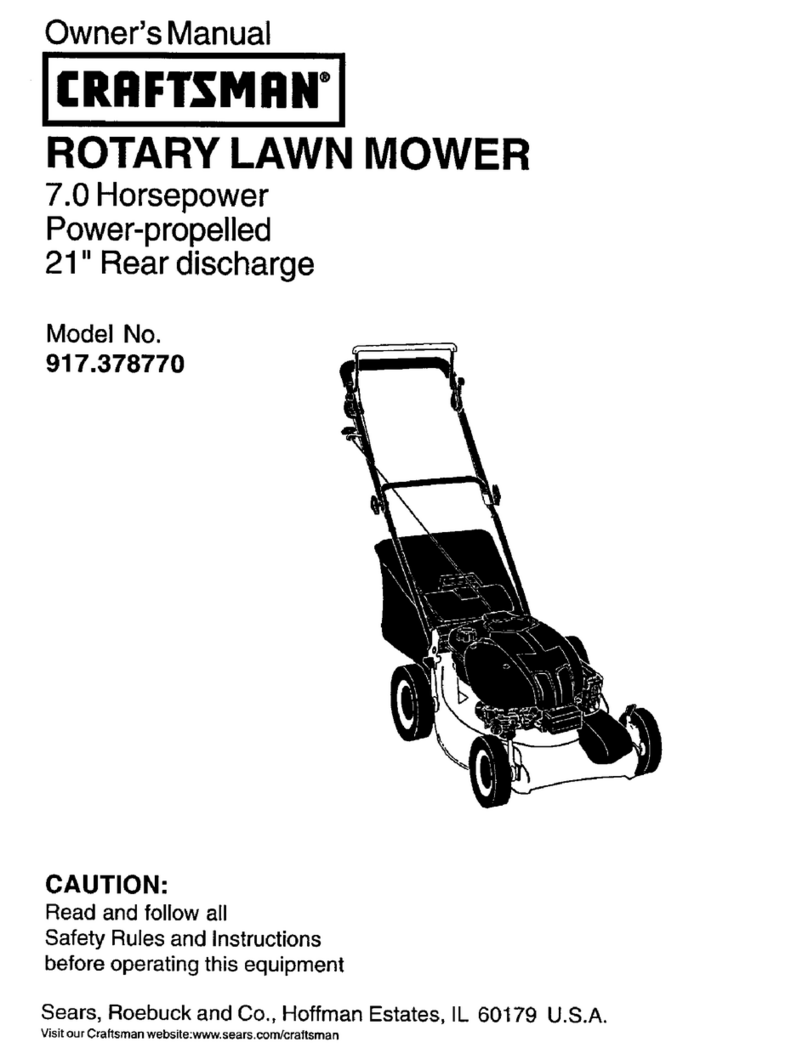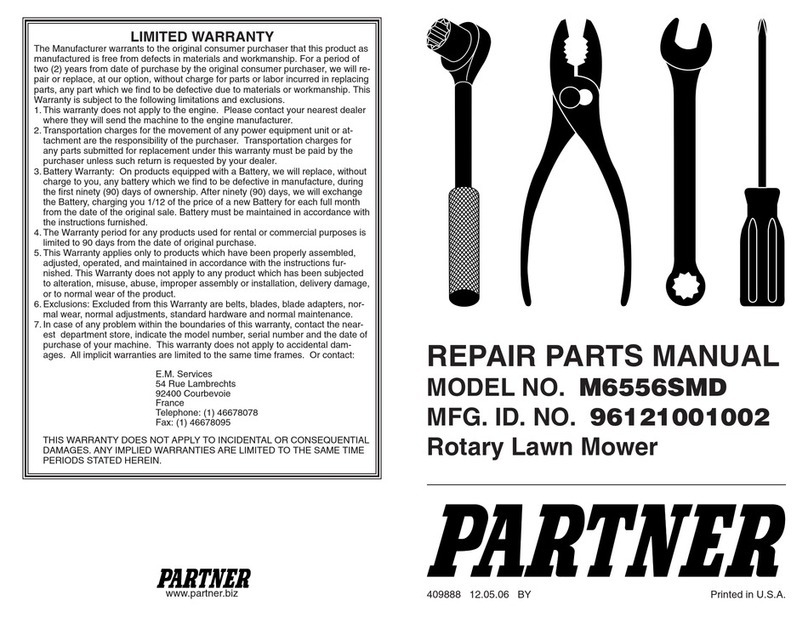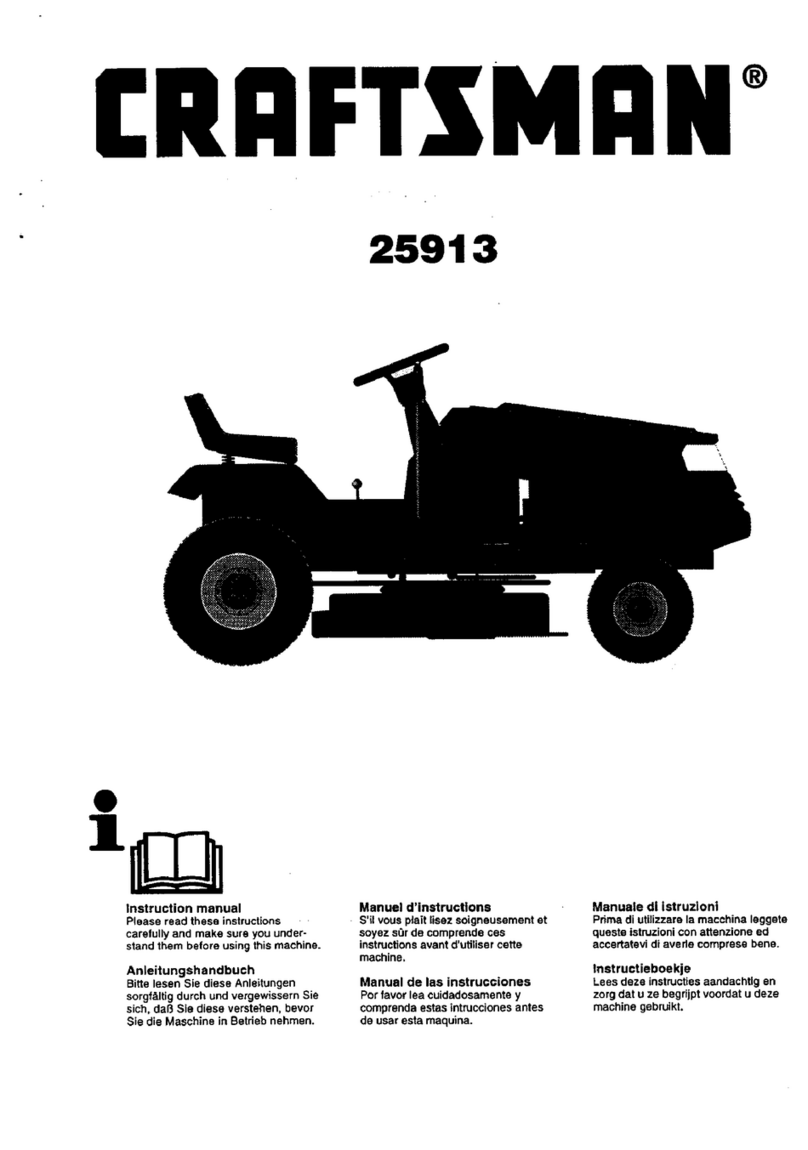
6
•Check the safety interlock switches daily for proper
operation. If a switch should fail, replace the switch
before operating the machine. After every two years,
replace all interlock switches in the safety system,
whether they are working properly or not.
•Before starting the engine, sit on the seat.
•Using the machine demands attention. To prevent loss
of control:
– Do not drive close to sand traps, ditches, creeks,
embankments, or other hazards.
– Reduce speed when making sharp turns. Avoid
sudden stops and starts.
– When near or crossing roads, always yield the
right-of-way.
– Apply the service brakes when going downhill to
keep forward speed slow and to maintain control of
the machine.
•When operating a machine on slopes, by banks, or drop
offs, always have ROPS (roll–over protection system)
installed.
•When operating a machine with ROPS (roll–over
protection system) always use the seat belt and make
sure seat pivot retainer pin is installed (GM only).
•Raise the cutting units when driving from one work
area to another.
•Do not touch the engine, silencer/muffler, or exhaust
pipe while the engine is running or soon after it has
stopped because these areas could be hot enough to
cause burns.
•On any hill, there is the possibility of tipping or rolling
over, but the risk increases as the slop angle increases.
Steep hills should be avoided.
– Cutting units must be lowered when going down
slopes to maintain steering control
•Engage traction drive slowly, always keep foot on
traction pedal, especially when traveling downhill.
– Use reverse on traction pedal for braking.
•If the machine stalls when climbing a slope, do not turn
the machine around. Always back slowly, straight down
the slope.
•When a person or pet appears unexpectedly in or near
the mowing area, stop mowing. Careless operation,
combined with terrain angles, ricochets, or improperly
positioned guards can lead to thrown object injuries. Do
not resume mowing until the area is cleared.
Maintenance and Storage
•Make sure all hydraulic line connectors are tight and all
hydraulic hoses and lines are in good condition before
applying pressure to the system.
•Keep your body and hands away from pin hole leaks or
nozzles that eject hydraulic fluid under high pressure.
Use paper or cardboard, not your hands, to search for
leaks. Hydraulic fluid escaping under pressure can have
sufficient force to penetrate the skin and cause serious
injury. Seek immediate medical attention if fluid is
injected into skin.
•Before disconnecting or performing any work on the
hydraulic system, all pressure in the system must be
relieved by stopping the engine and lowering the cutting
units and attachments to the ground.
•Check all fuel lines for tightness and wear on a regular
basis. Tighten or repair them as needed.
•If the engine must be running to perform a maintenance
adjustment, keep hands, feet, clothing, and any parts of
the body away from the cutting units, attachments, and
any moving parts.
•To ensure safety and accuracy, have an Authorized Toro
Distributor check the maximum engine speed with a
tachometer.
•If major repairs are ever needed or if assistance is
desired, contact an Authorized Toro Distributor.
•Use only Toro-approved attachments and replacement
parts. The warranty may be voided if used with
unapproved attachments.
Sound Pressure Level
This unit has an equivalent continuous A-weighted sound
pressure level at the operator ear of: 91 dB(A), based on
measurements of identical machines per Directive
98/37/EC and amendments.
Sound Power Level
This unit has a guaranteed sound power level of:
105 dBA/1 pW, based on measurements of identical
machines per Directive 2000/14/EC and amendments.
Vibration Level
This unit does not exceed a vibration level of 2.5 m/s2at
the hands based on measurements of identical machines per
ISO 5349 procedure.
This unit does not exceed vibration level of 0.5 m/s2at the
posterior based on measurements of identical machines per
ISO 2631 procedures.
